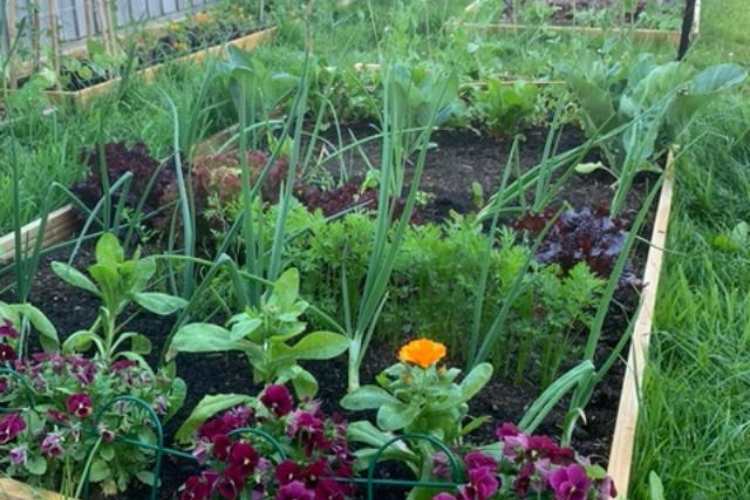What is No Dig Gardening?
30th Apr 2023
No dig gardening is gaining popularity amongst gardeners, but what is it, and why is it gaining so many followers? We look at how no dig gardening works and how you can make it work for you.
You may have heard of no dig gardening by now. It has, until recently, been considered a slightly whacky alternative to “conventional” gardening, which advocates digging over the soil once or twice annually.
However, with recent advances in scientific understanding of soil, we are beginning to understand why no dig gardening works and why so many people are making the switch. No dig is easier for the gardener, saving them a lot of time and energy digging, and helps gardening to be more inclusive for those less able. It also cultivates healthy soil, which can help your garden plants thrive.
What is No Dig Gardening?
No dig gardening is an age-old approach that involves not digging the soil and laying organic matter on the surface to feed the soil once a year. Instead, it replicates patterns found in nature, where leaves fall to the ground once a year, replenishing the organic matter in the soil.
Here in the UK, if we lay leaves on the ground, we usually get a lot of slugs and woodlice. So, if practising no dig gardening in this climate, we recommend using compost. This replenishes the organic matter in the soil but doesn’t create a habitat for pests that proliferate in our wet conditions and may cause problems for young plants.

No dig gardening relies on the life in the soil to do the digging for you. Allowing these natural processes to take place, soil health improves year after year, leading to healthier plants. In no dig gardening, we also abstain from using any fertilisers, relying instead on the life in the soil.
What is the Soil Ecosystem?
In the last few decades, we have started to understand how plants interact with the soil. We used to believe that healthy soil was the right mix of sand and silt and that soil was a pretty inert substance useful for holding up our plants. We now understand that our plants live in symbiosis with the soil's life. This means our plants depend on the soil life, and the soil life depends on plants.
As plants are primary producers – the only things on earth that can produce mass from thin air – all ecosystems are fed in some way by plants. For example, the soil ecosystem feeds on dead plant matter that falls to the surface of the soil, but our plants also actively feed it.
Plants produce carbohydrates and sugars whilst they are photosynthesising, and they use these things to power their own growth. However, we now know plants can send as much as 40% of the carbohydrates and sugars they produce down through their roots into the soil. This feeds the life in the soil.

In return, the soil life maintains good soil structure – the ideal environment for plant roots releases nutrients to the plants, helps plants fight off pests and diseases, helps plants source nutrients and even allows plants to communicate with one another. The plants value this service so much that they will give away nearly half of their hard-earned carbs and sugar to pay for it.
How do Plants Get Nutrients Without Fertilisers?
The Amazon rainforest is one of the most productive ecosystems on the planet. Trees tower above the ground, and the weight of the plant life growing there is staggering. And, of course, nobody digs or fertilises it. So how does it work?
The truth is that most soil has enough nutrients to support an abundance of plant life indefinitely. The life in the soil acts as an external gut for the plants, breaking down the nutrients and minerals in the soil and putting them into a form readily available to our plants. Plants can only take up nutrients that are in a soluble form. Bacteria and fungi in the soil help to release these nutrients. Fungi also join up with plants’ root systems to help transport nutrients and source water.
We need to apply fertilisers to agricultural soils because the soil life is depleted by ploughing. Ploughing and digging disturb the soil ecosystem. It breaks delicate fungal hyphae and exposes other organisms to conditions they cannot always survive. Repeated digging and ploughing deplete the soil ecosystem over time, creating more reliance on fertilisers.
How Soil Structure Gets Made Naturally
A well-established no dig garden bed will have a firm but springy texture. The soil's surface sticks together well, doesn’t get waterlogged (unless the whole area is underwater) and doesn’t dry out and crack. As a result, it’s really stable and not likely to be washed away or compacted. Additionally, the surface is fine and easy to hoe, making weed management much more straightforward.
Soil structure in a no dig system is created by aggregation. Organisms moving through the soil open up spaces in the soil called pores. Earthworms come up to the surface of the soil to feed on rotting organic matter and open pores and pull organic matter down through the layers of the soil.

Bacteria and fungi in the soil secrete sticky glues that bind the tiny particles in the soil together, creating aggregates and pores. This helps the soil retain water, improves drainage and keeps it crumbly and soft. No dig gardening harnesses these natural processes to achieve healthy soil structure.
How can I Start No Dig Gardening Myself?
At the risk of sounding obvious, the first thing to do is stop digging. The soil can repair itself, and the life in the soil will build over time if left alone.
You will need to replenish the organic matter in the soil. The best way to do this is with a mulch of organic matter such as compost or well-rotted manure. Then you relax and let the soil life do the rest. I suggest using as much organic matter as possible; 2-6 inches is perfect for setting up a bed, but if you don’t have that much, don’t worry. Just try to cover the surface of the soil or cardboard if you can.
If you are starting a new bed or growing somewhere that is particularly weedy, you will need to lay a thick layer of cardboard to suppress weeds first. Then, water the cardboard well and apply your compost or manure over the top. Finally, if you have perennial weeds, such as brambles, you must dig them out. Don’t worry about digging in small amounts where you need to; repeated digging over should stop if you want to benefit from the life in the soil.
You must reapply compost yearly to replenish your beds for the best results. In future years, you will need much less compost; just enough to cover the surface is sufficient. So, if you haven't already, it’s a good idea to start composting at home.
What are the benefits of no dig gardening?
• Less work: Without digging, you save yourself a lot of time and effort each year.
• Fewer weeds: Digging can turn weed seeds into the soil and unearth old weed seeds making them more likely to germinate. Bacterial and fungal communities in healthy no dig soils can also help to suppress weeds by balancing pH and nutrient levels in the soil.
• Less watering: Compost on the surface helps to lock in moisture and reduce evaporation. Aggregates in the soil hold on to water like a sponge so it doesn’t drain away so quickly.
• Better aeration: Naturally built soil structure contains pores that hold air, which is essential for most terrestrial plant roots to respire. As it rains and water filters down through the pores in the soil, sticking to the aggregates, it also draws down air, actively aerating the soil even whilst it’s raining.
• No need for fertilisers: Unless you grow in pots, the soil life can release nutrients to your plants, so there is no need to feed them. This will also mean your plants have a more balanced diet containing macro and micronutrients.
What are the Pitfalls of No Dig Gardening?
No dig gardening is not a quick fix for weed or pest control. Whilst it is an effective tool, it takes time—things in the garden work at their own pace. You will likely notice the main difference in the work you must do. No dig gardening is significantly easier than digging over your garden or allotment.
Compost and manure can be difficult to find, especially quality products. Manure can contain aminopyralid which can poison your soil. Ensure that you check manure before spreading it. You can do this by planting a broad bean into the manure and waiting a few weeks. If it comes out distorted, the manure contains aminopyralid and should be safely disposed of. Asking local gardeners for tips on where to get manure is a great idea.
There is a lot of information on the internet about no dig and no-till gardening. Ensure that you are following advice that is relevant to where you live. In more arid climates, people practice no dig gardening differently. We must do what is appropriate for our environment, ensuring we aren’t creating homes for slugs!
You likely already practice no dig gardening in some parts of your garden. So why not give it a go elsewhere so you, too, can feel the benefit of less work and healthier plants.
This article was written by Becky Searle. Becky has almost 80,000 followers over Instagram, Facebook and Twitter. She also has her own Podcast, The Seed Pod, and a YouTube channel. Check out Becky’s blog – Sow Much More


